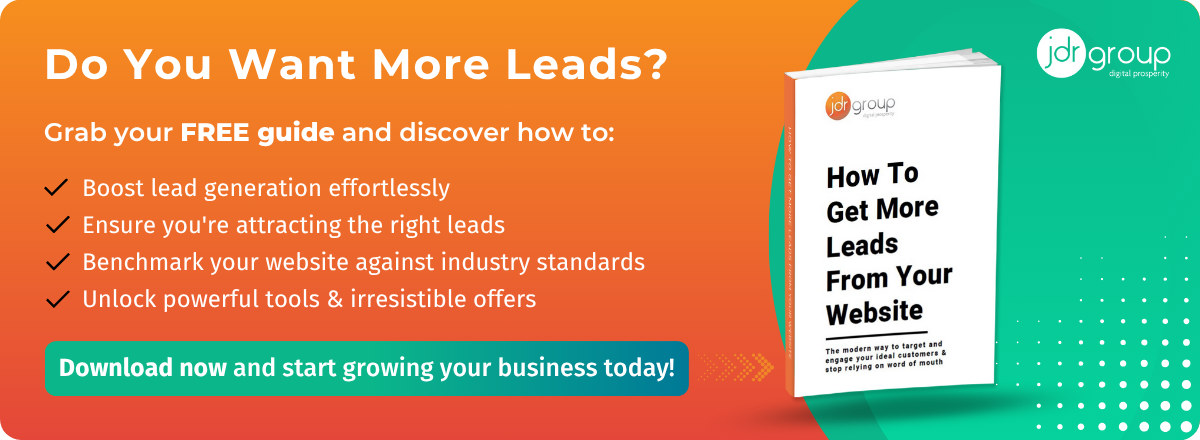Get High Quality Leads Without Breaking the Bank

The amount that a small business should spend on lead generation varies greatly and depends on several factors such as your industry, the value of your products, your target audience, and the specific marketing strategies and channels used. Lead generation will cost more, for example, if you make heavy use of paid advertising on Google and social media, use reward programmes to incentivise leads, or purchase lead listings, than if you rely solely on organic traffic - and you are likely to spend more per lead if you work in the financial services or technology sector, as opposed to B2C retail. However you cut it, the cost of lead generation can quickly mount up, especially if you’re having trouble converting. A lead that doesn’t convert is worthless, no matter how cheap it is to obtain.
Focusing your marketing budget on the following lead generation strategies can help lower your overall cost per lead (CPL) – which can be calculated by dividing your total marketing expenditure by the total number of inbound leads generated – without affecting the quality of each lead.
Website optimisation:
As most sales leads are going to come through your website, this is the best place to start when optimising your lead generation strategy. Despite the prevalence of social media, your business website is still often the first point of contact between your business and its potential customers, so review your site to ensure that it is designed to convert visitors into leads. How do you do this? Firstly, by getting your content in order so that it clearly and concisely expresses your value proposition and the benefits customers can expect from purchasing your products or services. Too many business websites are full of ‘we this, we that’, as if the sales narrative was all about them. It’s not. Making your website content more customer centric will immediately improve conversions. Other improvements you can make to your site include creating clear and compelling CTAs to encourage inward leads, streamlining your navigation and site layout, and providing more ways for customers to get in touch with you, such as an on-site chat bot.
Strategic advertising:
Optimising your CPL doesn’t necessarily involve shying away from costs. Social platforms such as LinkedIn, Facebook, and Instagram all offer cost-effective advertising tools that allow you to target specific demographics and increase inbound leads among the customers most likely to purchase. In terms of lead generation, you can create advertising campaigns that channel traffic to sales-specific landing pages, where you can offer valuable content (such as downloadable e-books or webinars) in exchange for contact information. You may also be able to capture data or make sales directly through social media without involving your website.
Sales intelligence tools:
Sales intelligence tools provide actionable insights into your target market and its competitors, helping you make data driven decisions about where best to allocate your marketing budget for the most leads. A good example is LinkedIn Sales Navigator, which helps you identify and target the best buyers on LinkedIn and engage them with personalised outreach. Using these tools can lower your average CPL by increasing your conversion rate.
Omni-channel marketing:
This lead generation strategy involves integrating and aligning all your communication channels to offer a unified and seamless customer experience, and is best achieved through a marketing automation platform such as HubSpot. Omni-channel marketing is based on the understanding that customers engage with your business through various channels (social media, Google, your blog, website, and so on) before making a purchase decision, and maybe even before getting in touch with you. By offering a consistent brand message across all your content touch points, therefore, you increase your overall chance of conversion.
Independent review platforms:
Online reviews and testimonials are a powerful form of social proof that build credibility around your business and can sway potential customer decisions in your favour. Independent reviews on Google, social media, and Trustpilot are worth more than anything you publish on your own website, and so it pays to encourage satisfied customers to leave positive reviews on these public forums for other prospects to see. These reviews not only enhance your professional reputation but also improve local SEO on Google, making your company more visible to customers making local keyword searches.
What next?
Quality trumps quantity when it comes to effective lead generation, and it’s always better to have fewer, highly qualified leads that are likely to convert than a large number of dubious or low-quality leads. So, when trying to save money on lead generation, it’s important to establish a realistic CPL, below which it may not be possible to achieve the level of quality you need to reach your sales targets. Factors to consider when optimising your CPL include the average value of each sale, the length of your sales cycle, and average customer lifetime value.
To find out more about cost-savvy lead generation and how to get the most value from your marketing budget, please get in touch with one of our inbound marketing specialists today by calling 01332 982197.
Image source: Canva



